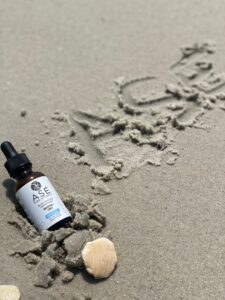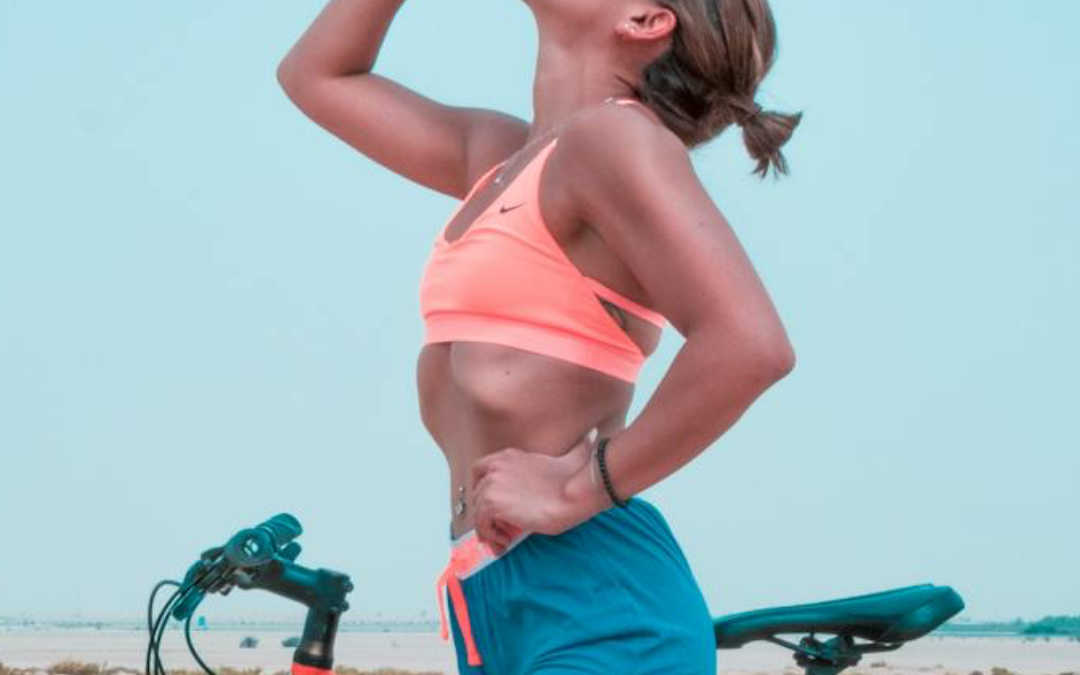Nothing says summer like fun in the sun! But summers can also be tricky. The afternoon barbeque is ruined if someone, say, burns off their face hair with the grill. Or someone else “falls out” from the heat. Or one of the kids gets a nasty sunburn.
Fun in the sun can turn disastrous, quickly, if you don’t think of sun safety, outdoor safety, and prioritize protecting your skin and your health.
Today, we’re sharing some sun safety tips to get you through the summer and how CBD roll on cream might be your summer secret weapon this year.

Key Points
- Why you need to be safe in the sun
- What is heat index?
- How can the sun’s UV rays harm you?
- What are the top sun safety tips?
- How is CBD roll on the perfect summer companion?
Why You Need to Stay Safe in the Sun
If the sun gives us vitamin D, an essential vitamin, then it seems we’d want to be in the sun as much as possible, right? Well, yes, you are partially correct. The sun has tremendous health benefits for us:
- Improved mental health (serotonin)
- Vitamin D
- Improved mood
- Relieves stress
- Some health conditions can be improved with moderate sunlight exposure
The problem with sunlight, however, is that there’s a fine line between having too much exposure and not – and it’s hard to tell if you’re overdoing it when you’re out there having fun. Sun exposure can cause a variety of health problems, so it’s important to use the proper protection when you’re out there soaking up the summer.
What Is a Heat Index?
For one, the heat from the sun may feel one way as you are out there in it, when the real danger could be a much higher heat index than what it feels like.
What, exactly, is a heat index? The National Weather Service explains on their website what a heat index is, but also how the humidity factor does affect how hot your body gets when you spend time outdoors:
“The heat index, also known as the apparent temperature, is what the temperature feels like to the human body when relative humidity is combined with the air temperature. This has important considerations for the human body’s comfort.” – NWS
When your body gets too hot, and it’s humid outside, the body’s natural cooling system is affected. This means you could get overheated.
When the body gets too hot, it begins to perspire or sweat to cool itself off. If the perspiration is not able to evaporate, the body cannot regulate its temperature. Evaporation is a cooling process. When perspiration is evaporated off the body, it effectively reduces the body’s temperature. When the atmospheric moisture content (i.e. relative humidity) is high, the rate of evaporation from the body decreases. In other words, the human body feels warmer in humid conditions.” – NWS
The heat index means that the temperature outdoors may not be the temperature conditions your body is enduring.
Sun Safety Tip: Pay attention to the heat index and air quality in your area when you plan to spend time outdoors this summer. Look for good – moderate air quality, reasonable temperatures, and a heat index of less than 3.
If the numbers are too high – then it may be a better day for managing your outdoor time.
Related reading: Pain Relief & Sports Recovery: How CBD Can Help
How Can the Sun’s UV Rays Hurt You?
The sun’s heat is only half the equation. The other half of that equation is the sun’s UV rays, which can cause skin damage with exposure. Even one sunburn has health consequences, raising your risks of certain skin cancers. Although lathering up chemically enhanced sunscreens are not ideal recommendations. A majority of sunscreen products are loaded with chemicals and while the FDA recommends them, there are some natural products without the harmful chemicals added, check ingredients, all sunscreens are not created equally and in fact some chemicals added to the sunscreens are the causes of many harmful side effects much greater than the actual sun itself.
Some experts are concerned that chemicals in sunscreens may be absorbed through the skin, leading to irritation in the skin, hormonal disruption and even skin cancer. So a question to pose is what’s causing the skin cancer if chemical products are a factor as well. FDA researchers found that chemicals are absorbed through the skin at higher levels than believed and there may be risks with fetuses when pregnant women are exposed to chemicals such as oxybenzone.
We are not suggesting to go outside exposed to the sun without common sense and protection, but to in fact be cognizant of which products you’re using and ways to retreat from too much sun exposure without subjecting yourself to an overload of harmful chemicals.
Possible Harmful Effects of UV Rays
- Damage to skin cells
- Cause sunburn (which can be severe and painful)
- Can contribute to skin cancer – the most common form of cancer in the US.
- Can worsen some skin conditions or health conditions
Symptoms of Heat Related Illness
Heat related illness is a huge factor when spending all those hours out in the summer sun. You may not even realize you’re feeling bad until it’s too late and the sun’s exposure has caused you to become ill.
Heat Related Illnesses
Heat cramps – Muscle cramps after experiencing outdoor exercise or exertion along with high heat.
Symptoms: Painful muscle cramps and spasms.
Treatment: Rest, cooling the body, hydration, muscle massage. (Try some CBD gel to help with the discomfort.)
Heat exhaustion – More severe than heat cramps. Caused by heat, loss of water in the body and salt from sweating. The body isn’t cooling itself well enough and you’ve gotten too hot.
Symptoms – Feeling overheated, heavy sweating, rapid pulse, feeling faint or fainting, cool/moist skin with goosebumps when in the heat, dizziness, fatigue, low blood pressure upon standing, muscle cramps, nausea, headache.
Treatment – Rest, cooling off, hydration, nutrient drinks to replace lost electrolytes and salt. If symptoms don’t improve within an hour or if they worsen rather than improving, then contact your medical doctor.
Heat stroke – The most severe heat illness is what’s called heat stroke (although it’s not actually a stroke).
Symptoms – High body temperature. (A core body temperature of 104 F /40 C or higher, obtained with a rectal thermometer, is the main sign of heatstroke.) Altered mental state or behavior. Confusion, agitation, slurred speech, irritability, delirium, seizures, coma. Alteration in sweating. Skin may feel hot and dry or moist and clammy. Flushed skin. Nausea and vomiting. Rapid breathing. Racing heart rate. Throbbing headache.
Sun Safety Tip: Heat stroke requires medical care. Call 911 if you think you or someone else may be having heat stroke.
Top Sun Safety Tips for a Fun and Safe Summer
The best way to ensure a summer long whirl of funness is to avoid the not-fun things; like injury, illness, or sunburn. The good news is that with a few good summer fun tips you can avoid lots of summer show-stoppers and get on with all the fun. Here are our favorite summer fun tips to get you safely through the summer, followed by three great summer safety sources you’ll want to bookmark.
- Be very safe at the grill! Use caution with any grilling equipment and keep the water hose handy. Stand back when applying any type of accelerant to your charcoal and light with care. Make sure your grill is level, secure, and away from high-traffic areas or flammable sources.
- Choose a sunscreen with ethical healthy ingredients without loaded harmful unnecessary chemicals. Do your research and choose what best suits your needs. Don’t mindlessly lather the chemicals that could be causing more damage than good.
- Wear the proper clothing. A thin, long-sleeved button up shirt can be your friend when you’re out in the sun. Keeping that sun off of your skin can actually keep you cooler. Wear a hat to keep the direct sun’s rays off the top of your head. Choose light-colored clothing that doesn’t gather as much heat.
- Protect your feet! The summer sun can cause blacktops or cement surfaces, even the sand, to get very hot which can blister or burn your feet. Keep an extra pair of flip flops or sandals in your bag in case you lose your shoes at the beach!
- Stay very well hydrated. Pack the cooler with lots of water and fruit which have a high water concentration. Avoid alcohol and sodas in excess because these could make you more dehydrated when outdoors.
- Pay attention to your body! When you start feeling overheated, get to the shade, rest, and drink water until you feel better.
- Avoid the midday sun. Go out in the morning or evening hours when the sun’s not at its hottest.
- Have a First Aid Kit on hand and a phone in case there is a heat related emergency.
Your New Summer Fun Must Have!
CBD Muscle Roll-On Gel is a must have for your gym bag, outdoor bag, and yes – beach bag. Here’s why…
This CBD Muscle Roll On has a lot more benefits than helping sore muscles. It can also help your sun-drenched skin.
In fact, some of the ingredients are summer wonders – soothing the tired and achy skin from too much fun in the sun! Check out these ingredients you didn’t know you needed in a CBD roll on – and why you’ll be tossing a bottle of this in your summer fun bag!
- Botanical, CBD, and essential oils for muscle relief
- Capsicum Oleoresin – analgesic properties
- Roman Chamomile Oil and Aloe juice – both are great for sun tired skin
- Cinnamon oil – Nourishes the skin and helps circulation
For More Info: Bookmark These Sun Safety Resources
- CDC on sun safety and skin cancer
- FDA on sun safety tips for a safer summer
- EPA on sun safety and heat index
Enjoy Your Summer Safely
There’s nothing quite like those long summer days out on the lake or hiking with friends. Days by the pool with your kids. Or those outdoor summer sports events your whole family loves. But one sun injury or illness could cut all that fun short.
Stay safe with these summer safety tips and make sure you carry three things in your bag at all times: a really good refillable water bottle, plenty of sunscreen and a CBD muscle roll on!
Now – get out there and get at your summer fun – safely!








